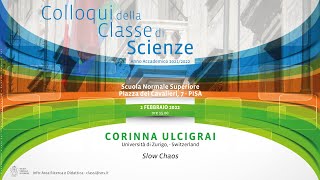Mixing (physics)
In physics, a dynamical system is said to be mixing if the phase space of the system becomes strongly intertwined, according to at least one of several mathematical definitions. For example, a measure-preserving transformation T is said to be strong mixing if whenever A and B are any measurable sets and μ is the associated measure. Other definitions are possible, including weak mixing and topological mixing. The mathematical definition of mixing is meant to capture the notion of physical mixing. A canonical example is the Cuba libre: suppose one is adding rum (the set A) to a glass of cola. After stirring the glass, the bottom half of the glass (the set B) will contain rum, and it will be in equal proportion as it is elsewhere in the glass. The mixing is uniform: no matter which region B one looks at, some of A will be in that region. A far more detailed, but still informal description of mixing can be found in the article on mixing (mathematics). Every mixing transformation is ergodic, but there are ergodic transformations which are not mixing. (Wikipedia).




















